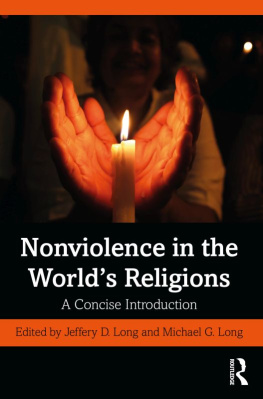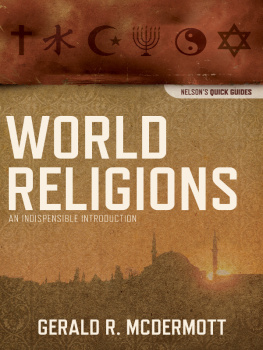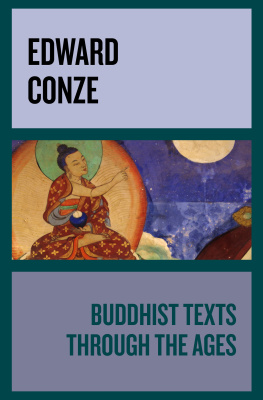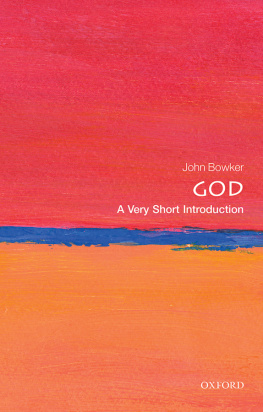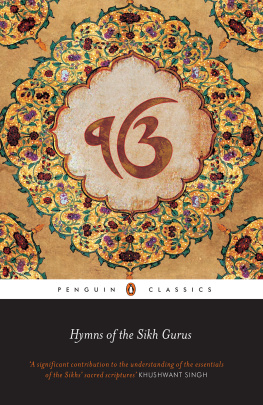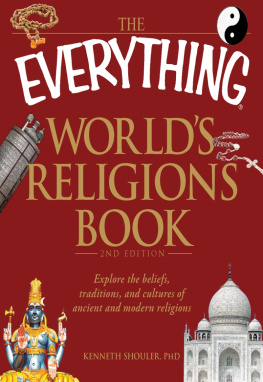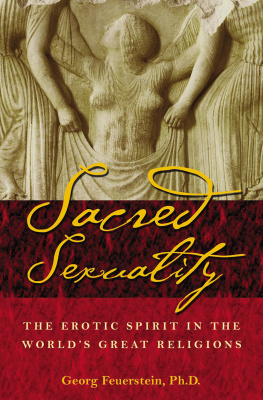THE MESSAGE AND THE BOOK
THE MESSAGE AND THE BOOK
Sacred Texts of the Worlds Religions
John Bowker

First published in the United States in 2012 by Yale University Press.
First published in Great Britain in 2011 by Atlantic Books, an imprint of Atlantic Books Ltd.
Copyright 2011 by John Bowker.
All rights reserved.
This book may not be reproduced, in whole or in part, including illustrations, in any form (beyond that copying permitted by Sections 107 and 108 of the U.S. Copyright Law and except by reviewers for the public press), without written permission from the publishers.
Yale University Press books may be purchased in quantity for educational, business, or promotional use. For information, please e-mail sales.press@yale.edu (U.S. office) or sales@yaleup.co.uk (U.K. office).
Printed in the United States of America.
Library of Congress Control Number: 2011938830
ISBN 978-0-300-17929-3 (hardcover: alk. paper)
A catalogue record for this book is available from the British Library.
This paper meets the requirements of ANSI/NISO Z39.48-1992 (Permanence of Paper).
10 9 8 7 6 5 4 3 2 1
CONTENTS
INTRODUCTION
No one has read all the sacred texts of the world; nor will anyone ever do so. There are simply too many for any individual to read them all. As this book makes clear, there are at least 100,000 of them, perhaps a quarter of a million, maybe even more.
SACRED AND PROFANE
Why is the number uncertain? Mainly because it depends on what counts as a sacred text, and that in turn depends on what the word sacred means. It is easy enough to go to a Latin dictionary and find out that the word sacrum refers to something dedicated to the gods, or even something set apart for the gods in order that they may destroy it. But the original meaning of a word in one language does not tell us what that word has become when it has moved house and taken up residence in another language.
Even so, it may give us a clue. Thus the word sacred may no longer mean something dedicated to the gods, but it does often imply that something has been set apart to be revered or respected for particular qualities or associations. The square at Lords cricket ground is spoken of as sacred turf, not because it has been dedicated to the gods, but because it is associated with the highest levels of the game and with the long history of Test Matches, not least against the Australians.
The distinction between sacred and profane in human life and history is so profound that Emile Durkheim (18581917), who is regarded by many as the father of social science, took it to be the essence of religion. As he wrote in The Elementary Forms of the Religious Life (1912, transl. 1961, pp. 52, 62):
All known religious beliefs, whether simple or complex, present one common characteristic: they presuppose a classification of all things, real and ideal, of which men think, into two classes or opposed groups, generally designated by two distinct terms which are translated well enough by the words profane and sacred A religion is a unified system of beliefs and practices relative to sacred things, that is to say, things set apart and forbidden.
To call a text sacred, therefore, implies that it is different in some way from other more ordinary texts. But in what way or rather, in what ways, since there is no single or simple criterion of distinction or difference?
REVELATION AND TEACHING
The most obvious way in which a text might be called sacred lies in the claim that it does not come from a human author, or at least not from a human author alone. Many texts are believed to come from God (or from some equivalent external source), either because God has written them or because he has inspired people to speak or write them. The ways in which God is believed to have done this are extremely varied, as this book makes clear. What, at least, they have in common is the belief that a text is sacred if it is Revelation and if it is inspired. Bible (p. 25), Quran (p. 125) and Vedas (p. 168) are Revelation in that sense, but they are very different from each other. To the question, Who or what is revealed?, this book is the beginning of an answer.
By no means all the texts regarded as sacred are in the category of Revelation. A large number of texts are revered and set apart because they contain teaching that leads to Enlightenment. The sacred texts of Buddhists or of Jains, for example, are not revealed by God, but they are set apart and distinguished because in the case of Buddhists they contain the Teaching of the Buddha, the one who has himself attained Enlightenment and can therefore show the way, or because in the case of Jains they contain the Teaching of the Ford-makers, the Tirthankaras, who can therefore be trusted as guides.
So how do we know which are the texts of Revelation or of Teaching? Where Revelation is concerned, it will already be obvious that texts cannot be picked out as revealed on the ground that they contain some agreed and obvious characteristic. Texts do not come into the world stamped with a seal saying revealed, sacred or inspired. To say that a text is sacred is a human judgement.
There are many reasons why that judgement has been made in the past about particular texts, whether of Revelation or of Teaching. Often such judgements relate to origin and content they are made, that is, on the basis of how a text is believed to have come into being, or on the basis of what it contains. For Buddhists, for example, a basic test is whether the text in question helps the person using it to attain the goal (e.g., p. 240).
Fundamental, however, to that judgement is the recognition or acceptance that some particular texts or group of texts have authority. The word authority is derived from the Latin auctoritas which in turn is related to auctor, author. By having authority, sacred texts may become the author (or at least joint-author) of the stories that people tell through their lives and histories. Sacred texts challenge people, and they offer them warrants and justification for what they think, say and do. The appeal to a sacred text for warrant and justification may be direct and literal, or it may be mediated through interpretation and exegesis, but in either case it is believed that the words should guide or control or inspire the lives of those who read or hear them. The words are then translated into the lives of individuals and into the organisation of families and societies.
SACRED TEXTS AND THEIR READERS
Because sacred texts have authority, people turn to them for an immense variety of reasons, ranging from a direct encounter with God or an immediate experience of Enlightenment, to a need for reassurance, guidance or inspiration. Some may go for far more elementary reasons, to predict the future, for example, or to find a wife.
People also turn to texts in extremely varied ways and with very different expectations. As a result, it is possible for several people to read the same sacred text but find in it entirely different and often conflicting meanings. It is exactly as William Blake observed in The Everlasting Gospel:
The vision of Christ that thou dost see
Is my visions greatest enemy.
Thine is the friend of all mankind;
Mine speaks in parables to the blind
Both read the bible day and night;
But thou readst black where I read white.
Next page

